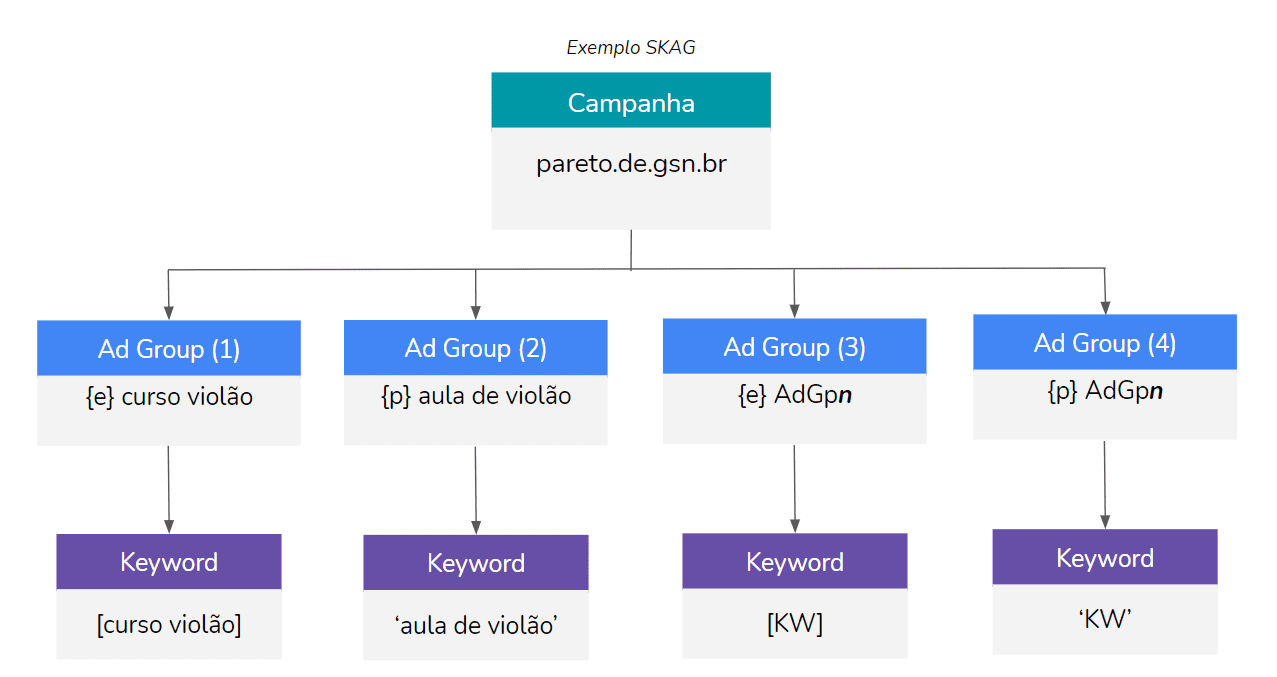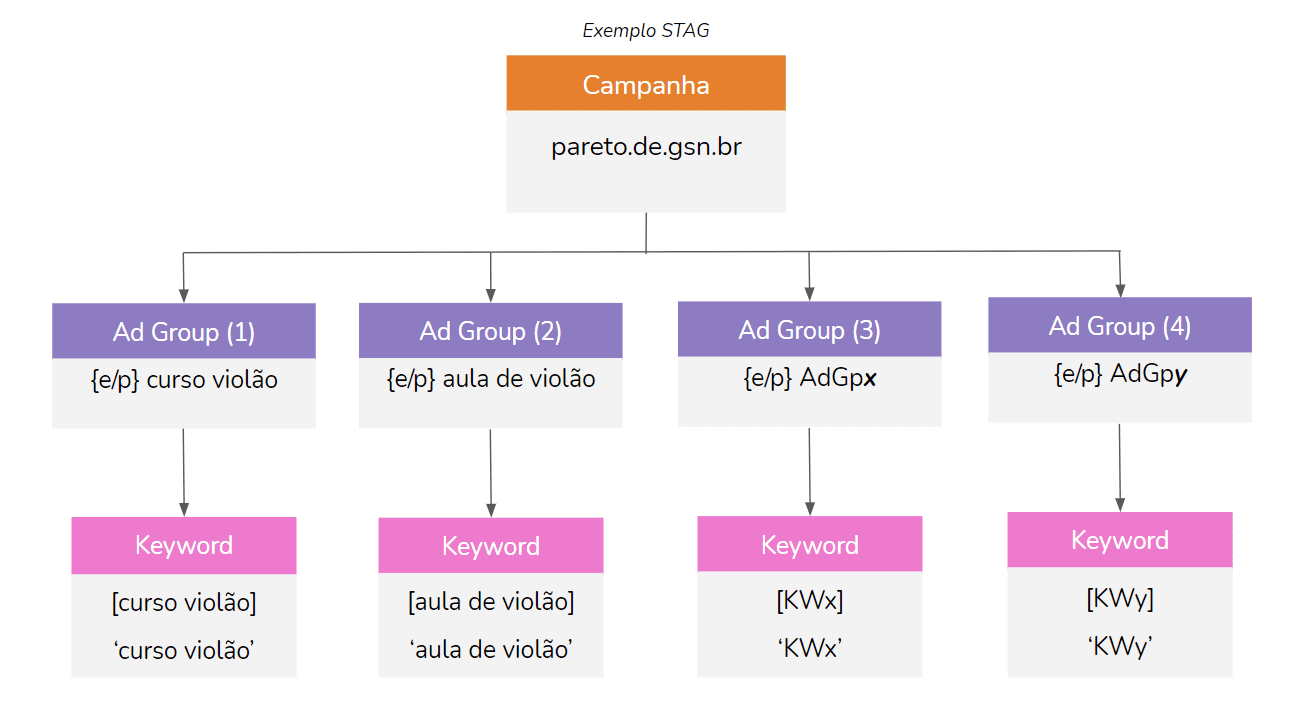Have you heard of the Google SKAG and STAG structures? We'll introduce you to each of them here.
What is SKAG?
The name SKAG stands for Single Keyword per Ad Group. So, in this structure, you basically create an ad group in your campaign with just one keyword.
You may be asking yourself: but why create such a restricted ad group?
Let's assume that your two business keywords were (1) Guitar course and (2) Guitar lesson . With the diagram below, let's understand how this search campaign would be structured for a Decision audience:

From the example above you can see that this is mathematically one of the best ways to optimize your Google Ads account - at the most granular level possible.
By placing a keyword in an ad group, you build a more specific and focused ad for that word, generating a higher CTR (click-through rate), also improving the Ad Relevance and Quality Score, as well as lowering the CPC (cost per click).
In addition, with the SKAG methodology, you can have bid modifiers considering only one-word data, resulting in non-generalized data and more accurate analysis.
What is STAG?
An extensive study carried out by Pareto with the historical data of one of its clients resulted in the structuring of an account system called STAG - Single Term Ad Group.
Although it has the same acronym as the Single Themed Ad Group, this other system has a somewhat different structure. After all, it comes from SKAG (Single Keyword Ad Group) and can result in better optimization and management efficiency.
But what makes this structure different?
Let's take the example of the SKAG campaign and adapt it to a STAG version, as shown in the image below:

In general, we can see that in this structure we also create Ad Groups with a keyword, but instead of a single match (as in SKAG) we put more than one match.
By considering two matches - as in the example above, exact and phrase - we also have the possibility of accumulating data more quickly. This accumulation will allow us to carry out cross-negativities between ad groups and also a high degree of personalization of these ads.
In Paid Media, this faster accumulation of data translates into budget savings, since the automation tools that use Machine Learning, such as Pareto itself, will also have faster and more accurate optimization proposals.
Right, but how does this fit into Risk Analysis?
In today's Pareto Ads Risk Analysis, we'll measure what percentage of your account follows the SKAG type of structure. But don't worry if you opt for the STAG strategy, as it is also positive and extremely relevant for machine learning.
As the SKAG structure is very granular, we want to show users who use it how this percentage is doing in their account. We do this because by increasing it, you will also indirectly increase the percentage of Ad Relevance and Rank Quality.
If you don't already use SKAG and want to migrate to this structure, we have an important tip for you:
Start with those campaigns that aren't performing so well and gradually separate out the words for a specific ad group, redistributing the budget. Then follow these gradual changes with the average-performing campaigns. This way, you don't act abruptly and you mitigate the momentary loss of performance that this type of structural change can generate.



